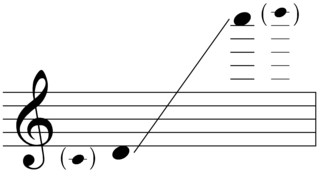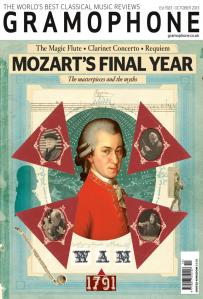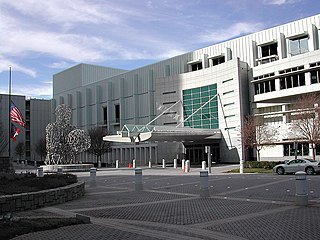Although a concerto is usually a piece of music for one or more solo instruments accompanied by a full orchestra, several composers have written works with the apparently contradictory title Concerto for Orchestra. This title is usually chosen to emphasise soloistic and virtuosic treatment of various individual instruments or sections in the orchestra, with emphasis on instruments changing during the piece.
Rainbow Body is an orchestral composition by the American composer Christopher Theofanidis. It was commissioned by the Houston Symphony, which first performed the work in April 2000 under the conductor Robert Spano. The piece is dedicated to the Texas lawyer and philanthropist Glen Rosenbaum. Rainbow Body is one of Theofanidis's most-performed compositions and won the 2003 London Masterprize competition.
Jennifer Higdon's Concerto for Violin and Orchestra was written in 2008. The work was jointly commissioned by the Indianapolis Symphony Orchestra, the Toronto Symphony Orchestra, the Baltimore Symphony Orchestra, and the Curtis Institute of Music. It was composed for the violinist Hilary Hahn and was given its world premiere by Hahn and the Indianapolis Symphony Orchestra under the conductor Mario Venzano on February 6, 2009. The piece was later awarded the 2010 Pulitzer Prize for Music.
Symphony No. 50, Op. 360, Mount St. Helens is a three-movement orchestral composition by the American composer Alan Hovhaness. The symphony was commissioned by former Hovhaness publisher C.F. Peters and was completed January 24, 1982. It premiered March 2, 1984, and was performed by the San Jose Symphony under conductor George Cleve. The piece commemorates the volcano Mount St. Helens, culminating in the events of its 1980 eruption, which Hovhaness had witnessed from his Seattle home.
The Viola Concerto is a concerto for viola and orchestra in three movements by the American composer Jennifer Higdon. The work was jointly commissioned by the Library of Congress, the Nashville Symphony, the Curtis Institute of Music, and the Aspen Music Festival. It was premiered March 7, 2015 at the Thomas Jefferson Building in Washington, D.C., with conductor Robert Spano leading violist Roberto Díaz and the Curtis Chamber Orchestra. The work won the 2018 Grammy Award for Best Classical Contemporary Composition.
The Piano Concerto is a concerto for solo piano and orchestra by the American composer Jennifer Higdon. It was commissioned by the National Symphony Orchestra and was first performed December 3, 2009 at the John F. Kennedy Center for the Performing Arts in Washington, D.C.. The premiere featured pianist Yuja Wang and the National Symphony Orchestra under conductor Andrew Litton.
Concerto 4-3 is a concerto for two violins, double bass, and orchestra in three movements by the American composer Jennifer Higdon. The work was commissioned for the string trio Time for Three by the Philadelphia Orchestra, the Pittsburgh Symphony Orchestra, and the Wheeling Symphony Orchestra. It was first performed in Philadelphia on January 10, 2008, by Time for Three and the Philadelphia Orchestra conducted by Christoph Eschenbach.
Fanfare Ritmico is a single-movement orchestral composition by the American composer Jennifer Higdon. The work was commissioned by The Women's Philharmonic as part of The Fanfares Project. It was given its world premiere in March 2000 by conductor Apo Hsu and the Women's Philharmonic.
Loco is an orchestral composition in one movement by the American composer Jennifer Higdon. The work was commissioned by the Ravinia Festival of Highland Park, Illinois to commemorate the Ravinia train as part of the Train Commission Project. It was first performed on July 31, 2004 at the Ravinia Festival by the Chicago Symphony Orchestra.
The Singing Rooms is a concerto for solo violin, choir, and orchestra by the American composer Jennifer Higdon. The work was jointly commissioned by the Philadelphia Orchestra, the Atlanta Symphony Orchestra, and the Minnesota Orchestra. It was first performed on January 17, 2008 in Philadelphia by the violinist Jennifer Koh, The Philadelphia Singers, and the Philadelphia Orchestra under the conductor Christoph Eschenbach. The text of the piece is set to poems by Jeanne Minahan.
blue cathedral is an orchestral composition by the American composer Jennifer Higdon. The work was commissioned by the Curtis Institute of Music in 1999 to commemorate the conservatory's 75th anniversary. It was first performed in 2000 by the Curtis Institute of Music Symphony Orchestra. The piece is dedicated to the memory of Higdon's brother and is one of the composer's most performed works.
The Oboe Concerto is a composition for solo oboe and orchestra by the American composer John Harbison. The work was commissioned by the San Francisco Symphony for its principal oboist William Bennett. It was completed on October 18, 1991, and was given its world premiere by Bennett and the San Francisco Symphony under the conductor Herbert Blomstedt in 1992.
The Concerto for Viola and Orchestra is a viola concerto by the American composer John Harbison. The work was commissioned by the Saint Paul Chamber Orchestra, the Los Angeles Chamber Orchestra, and the New Jersey Symphony Orchestra with contributions from Meet The Composer and Reader's Digest. It was first performed by Jaime Laredo and the New Jersey Symphony Orchestra under the direction of Hugh Wolff on May 18, 1990.
The Symphony No. 3 is a composition for orchestra by the American composer Ned Rorem. The work was first performed by the New York Philharmonic under the direction of Leonard Bernstein at Carnegie Hall on April 16, 1959.
The Piano Concerto No. 2, Op. 39, is the second piano concerto by the Argentinian composer Alberto Ginastera. The work was commissioned by the Indianapolis Symphony Orchestra for the pianist Hilde Somer, to whom the concerto is dedicated. It was first performed by Somer and the Indianapolis Symphony Orchestra conducted by Izler Solomon on March 22, 1973.
The Concerto for Viola and Orchetra is a musical composition for viola and orchestra by the American composer Walter Piston. The work was written in 1957 for the violist Joseph de Pasquale, who first performed the piece with the Boston Symphony Orchestra on March 7, 1958.
The Concerto for Piano and Orchestra is a musical composition by the American composer Aaron Copland. The work was commissioned by the conductor Serge Koussevitzky who was then music director of the Boston Symphony Orchestra. It was first performed on January 28, 1927, by the Boston Symphony Orchestra conducted by Koussevitzky with the composer himself as the soloist. The piece is dedicated to Copland's patron Alma Morgenthau Wertheim.
The Low Brass Concerto is a concerto for four solo low brass instruments and orchestra by the American composer Jennifer Higdon. The work was commissioned by the Chicago Symphony Orchestra for their renowned low brass section and co-commissioned by the Baltimore Symphony Orchestra and the Philadelphia Orchestra. It was composed in 2017 and was first performed by the Chicago Symphony Orchestra under the direction of Riccardo Muti on February 1, 2018.








